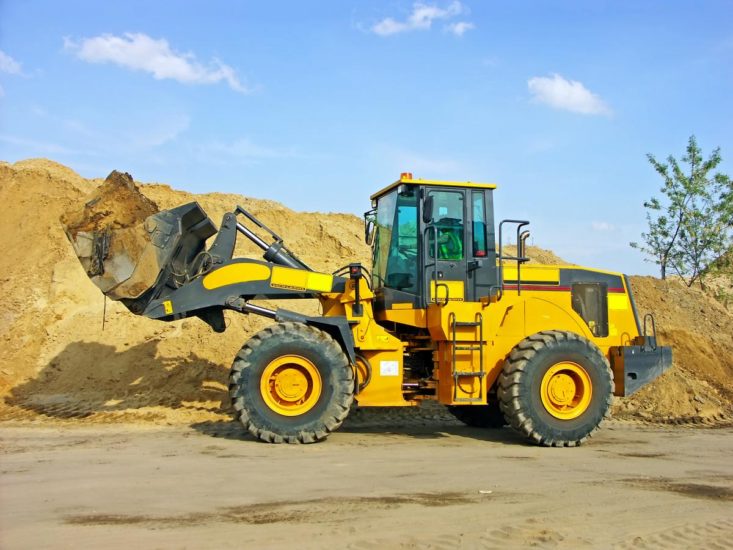Reliable Construction Equipment Rentals for Your Projects
Reliable Construction Equipment Rentals for Your Projects
Blog Article
Leasing Vs. Buying Construction Devices: Making the Right Choice for Your Job
When embarking on a building project, one of the critical choices that project stakeholders and managers face is whether to purchase or lease building and construction equipment. The choice pivots on numerous aspects such as expense factors to consider, task period, devices maintenance, versatility, scalability, and risk management.
Cost Factors To Consider
When assessing the monetary element of acquiring versus renting out building tools, the in advance costs and lasting costs have to be very carefully thought about. Renting tools typically requires reduced initial settlements compared to buying, making it an eye-catching option for short-term jobs or specialists with spending plan restrictions. Renting out eliminates the requirement for large funding expenses and reduces the monetary risk associated with equipment ownership, such as maintenance and depreciation expenses. However, in the long run, continuously leasing tools can build up greater prices than buying, especially for extended tasks.
On the various other hand, buying building tools involves higher in advance expenses however can lead to lasting cost savings, specifically for regular customers or long-term jobs. Possessing tools provides adaptability, ease, and the possibility for resale value once the job is completed. Additionally, having tools enables personalization and knowledge with specific machinery, possibly raising effectiveness and efficiency on-site. Ultimately, the choice in between purchasing and renting construction tools hinges on the project's duration, frequency of use, spending plan considerations, and long-term financial goals.
Job Period

Conversely, for long-lasting projects or continuous building and construction job, acquiring devices could be the much more cost-effective option. Buying equipment can result in cost financial savings in the lengthy run, particularly if the tools will be frequently utilized. Additionally, possessing tools supplies a sense of control over its schedule and enables modification to fit particular project demands.

Equipment Maintenance
Given the important function job period plays in determining the most economical method between renting out and buying construction equipment, the focus currently moves in the direction of checking out the essential aspect of equipment maintenance. Appropriate upkeep is essential for ensuring the optimal performance and longevity of building devices. Renting equipment frequently includes the benefit of having well-maintained machinery provided by the rental business. This can minimize the concern of maintenance tasks from the task proprietor or professional, saving effort and time. On the various other hand, possessing devices requires a positive strategy to maintenance to stop malfunctions, make certain safety and security, and expand the devices's life-span. Routine assessments, maintenance, and prompt repair services are essential to keep owned and operated tools in leading functioning condition. Variable in maintenance costs when making a decision in between purchasing and renting out, as overlooking maintenance can cause expensive repairs, downtime, and job delays. Inevitably, a well-kept building equipment fleet, whether leased or had, is crucial for the effective and effective completion of building and construction projects.
Flexibility and Scalability
In the realm of building and construction equipment management, the element of versatility and scalability holds substantial importance for project effectiveness and resource use. Deciding to rent out building equipment provides a high level of versatility as it enables the quick adjustment of tools kinds and quantities based upon the evolving requirements of a project. Leasing enables professionals to access a large range of customized equipment that might be required for certain jobs without the long-term dedication of possession. This versatility is specifically advantageous for jobs with differing requirements or unclear durations (boom lift rental).
Renting building and construction tools uses the benefit of quickly scaling operations up or down as task needs rise and fall. Contractors can quickly trade or include tools to match the task's changing requirements without about his the restraints of owning assets that may become underutilized or obsolete.
Threat Administration
Reliable threat administration in building equipment operations is paramount to ensuring task success and mitigating possible financial losses. Building projects inherently entail various risks, such as tools malfunctions, crashes, and project delays, which can significantly impact the project timeline and budget plan. By carefully taking into consideration the dangers connected with owning or renting out construction equipment, project managers can make informed choices to decrease these potential hazards.
Renting out building and construction equipment can use a level of threat mitigation by moving the obligation of upkeep and repair work to the rental firm. This can minimize the monetary burden on the job owner in situation of unexpected tools failings (equipment rental company). In addition, renting out gives the versatility to accessibility specific equipment for specific job phases, decreasing the danger of having underutilized equipment
On the various other hand, owning construction tools provides a sense of control over its use and upkeep. Nevertheless, this additionally means bearing the full responsibility for repair work, maintenance expenses, and devaluation, enhancing the financial risks related to equipment ownership. Cautious danger assessment and consideration of aspects such as project duration, equipment application, and upkeep demands are crucial in determining one of the most suitable option for efficient danger management in building projects.
Verdict
Finally, when deciding in between leasing and acquiring building and construction tools, it is important to take into consideration expense, project period, equipment maintenance, scalability, threat, and versatility administration. Each variable plays a vital duty in determining the most ideal choice for the job at hand. By meticulously assessing these facets, job managers can make an informed choice that lines up with their budget plan, timeline, and general task goals.

Report this page